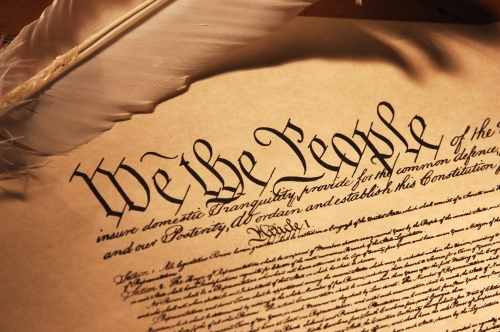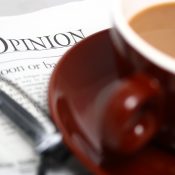While the statute does not require standing to bring an inter partes review challenge, that does not mean that a party has a right to seek redress in federal court where there is no Article III standing. It is hardly shocking that the Federal Circuit would apply well-established Constitutional safeguards to prevent those without appropriate grievances from entry into the federal appellate system.
 On January 11, GKN Automotive LTD. filed a brief in opposition to a petition for writ of certiorari filed by JTEKT Corporation. The question JTEKT seeks to have the Supreme Court consider is whether any inter partes review (IPR) petitioner, even a petitioner without standing, may appeal a final written decision of the Patent Trial and Appeal Board (PTAB) to the Court of Appeals for the Federal Circuit.
On January 11, GKN Automotive LTD. filed a brief in opposition to a petition for writ of certiorari filed by JTEKT Corporation. The question JTEKT seeks to have the Supreme Court consider is whether any inter partes review (IPR) petitioner, even a petitioner without standing, may appeal a final written decision of the Patent Trial and Appeal Board (PTAB) to the Court of Appeals for the Federal Circuit.
This dispute arose when JTEKT petitioned for IPR challenging the patentability of claims 1-7 of U.S. Patent No. 8,215,440, owned by GKN. After the PTAB instituted the IPR, GKN disclaimed claims 1, 4 and 5, which left only claims 2, 3, 6 and 7 remaining in the challenge. In its final written decision, the PTAB found that claims 6 and 7 were obvious, but that claims 2 and 3 remained patentable. JTEKT appealed. GKN filed a motion to dismiss because JTEKT lacked Article III standing. A motions panel of the Federal Circuit determined that the argument should be briefed in the merits briefs and addressed by the merits panel.
The merits panel of the Federal Circuit—Chief Judge Prost and Judges Dyk and O’Malley—determined that JTEKT lacked Article III standing and dismissed the appeal. The Federal Circuit explained that, while the statute does not require standing to bring an IPR challenge, previous cases have explained that the fact that the statute does not require standing to bring a challenge at the agency level does not mean that a party has a right to seek redress in federal court on appeal where there is no Article III standing.
Essentially, the Federal Circuit explained that the U.S. Constitution does not require standing (i.e., so-called Article III standing) when a challenge is being brought in front of an Executive Branch agency. The Constitution does, however, require standing in order to seek redress in a federal court, whether in the first instance at the trial level or at the appellate level.
No Leg to Stand On
This standing requirement for litigants in order to gain entry to a federal court is well-established, black-letter law taught to every law student across the country. It is hardly shocking that the Federal Circuit would apply well-established Constitutional safeguards and procedural law to prevent those without appropriate grievances from entry into the federal appellate system.
And in this case, JTEKT simply did not have any injury, real or imagined. The Federal Circuit found that JTEKT admitted that it had not yet finalized a product, and without a finalized product there couldn’t even be any infringement analysis. “GKN’s patent has never been asserted in litigation or been the basis of a threat of litigation,” lead attorney for GKN Linda Dupont Mettes explained to IPWatchdog.
“The Federal Circuit found that JTEKT failed to meet its burden to establish the injury-in-fact prong of Article III standing,” Mettes said. “JTEKT’s failure of proof on standing is an atypical situation and not an issue that merits Supreme Court review.”
An Outlier
The facts of this case are rather peculiar and not terribly likely to come up very often. The vast majority of post grant proceedings are associated with parallel proceedings in federal district court, making it likely that most litigants will have the requisite injury to claim Article III standing. Furthermore, the PTAB has been a rather unfriendly forum for patent owners, with patent owners very frequently making it the patent owner who will be appealing, not the petitioner. Therefore, with so few cases actually considered by the Supreme Court in any given term, this one seems of rather marginal importance.
Then there is the fact that the Federal Circuit got this one right. No statute can overrule the Constitution. Although lawyers and scholars will talk about this issue in terms of whether or not Article III standing is present, that is a Constitutional issue. Even if the statute says that any and all parties can appeal a decision on a final written decision, that statute cannot convey rights greater than or contrary to the Constitution. While it may be perfectly within Congressional authority to allow such a challenge by non-interested or injured parties at the agency, to allow such a challenge to spill over into a federal court would be unconstitutional. The Federal Circuit was correct to interpret the statute so that it is not unconstitutional.
Though some of colleagues may not agree, my prediction is the Supreme Court will not take this case. If by some stroke of extremely poor judgment the Court does take the case it will be to affirm the Federal Circuit.
Image Source Deposit Photos
Image ID: 13456269
Copyright: jamesgroup

![[IPWatchdog Logo]](https://ipwatchdog.com/wp-content/themes/IPWatchdog%20-%202023/assets/images/temp/logo-small@2x.png)

![[Advertisement]](https://ipwatchdog.com/wp-content/uploads/2024/05/LexisNexis-May-16-2024-sidebar-700x500-1.jpg)
![[Advertisement]](https://ipwatchdog.com/wp-content/uploads/2024/05/Artificial-Intelligence-2024-Getting-AI-Patents-Allowed-sidebar-700x500-1.jpeg)

![[Advertisement]](https://ipwatchdog.com/wp-content/uploads/2021/12/WEBINAR-336-x-280-px.png)
![[Advertisement]](https://ipwatchdog.com/wp-content/uploads/2021/12/2021-Patent-Practice-on-Demand-recorded-Feb-2021-336-x-280.jpg)
![[Advertisement]](https://ipwatchdog.com/wp-content/uploads/2021/12/Ad-4-The-Invent-Patent-System™.png)






Join the Discussion
2 comments so far.
Anon
January 18, 2019 11:55 amMr. Morgan,
I do not think that the issue has ever (properly) been about those entities that may have proper Article III standing.
Drawing attention to those that have no problem with proper Article III standing will only serve to cloud the real issue under consideration, and thus does not provide a meaningful point.
The underlying problem of course is in how the AIA was writte, and the fact that Congress expressly decided to set up a dual fora system in which participation in each forum comprises different requirements, setting the initial part of the two-step mechanism in the non-Article III forum (expressly setting that challengers may engage WITHOUT Article III standing) and then leaving the transition “murky.”
What this has led to has been attempts to bootstrap into the Article III forum by those lacking the proper standing and who – with all else being equal – would NOT be permitted to BE in that forum.
Paul Morgan
January 18, 2019 08:40 amGood analysis, especially in noting that the vast majority of Fed. Cir. appeals from IPR decisions are by patent owners or by defendants being sued and thus having undisputed Article III standing.